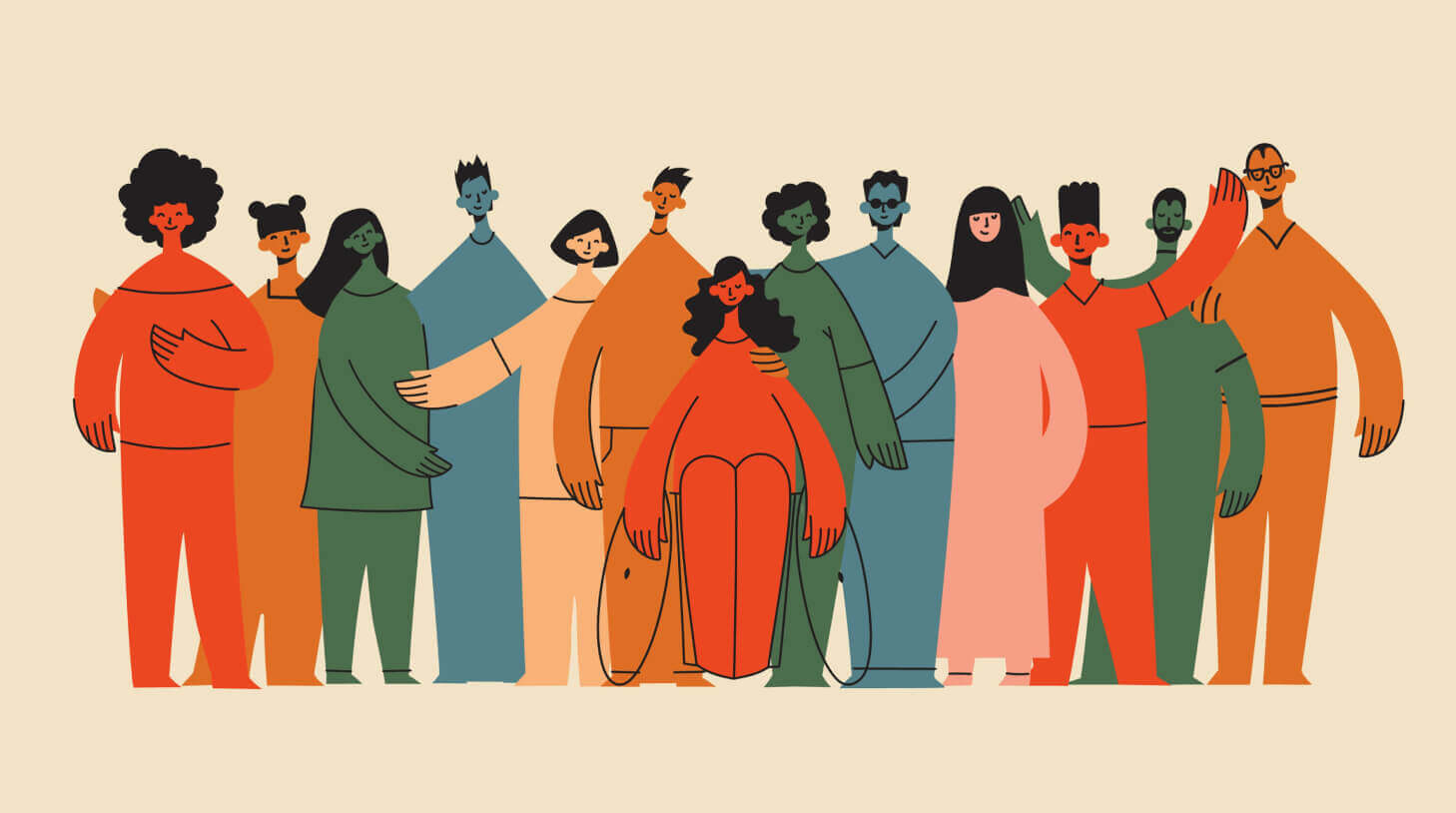Talent attraction: Why Maslow thinks your job ads suck
Are you a recruiter in a terrifyingly drab business park 30 minutes from the “cool” downtown core or city center? Getting crickets when you’re trying to fill those crucial developer roles in your non-tech firm, knowing that talented developers are constantly being wooed by software giants or exciting startups? Struggling to attract candidates to your mid-sized “everytown” locale when they’re moving en masse to Silicon Valley, NYC, London or another über-fantastic metropolitan hub?

Face it: there’s not much you can do about your location or the industry you’re in. You are where you are. But here’s where you can do something to boost your talent attraction: the job ad. Perhaps when you’re trying to lure job seekers with a job ad, you’re forgetting to address their needs.
Right now, the average job description is a mishmash of the original text from when the position was created quite a few years ago, some amendments from an enthusiastic new hiring manager and some sexier phrases stolen from various other companies’ career pages.
When you stop to consider the army of resources that marketers invest into a banner or headline just to make a viewer click, it’s mind-boggling to think that recruiters are not investing that same energy into their talent attraction strategies.
If the majority of job ads out there are any indication, recruiters are actually asking people to make an enormous change to their lives on the basis of bland copy and trite cliché.
There’s a better way to attract talent. Instead of drily saying, “We’re looking for someone to do X, Y, and Z for us, for this-and-that salary and benefits”, you should appeal directly to the candidate’s deeper needs and wants.
That’s where Maslow’s Hierarchy of Needs comes in.
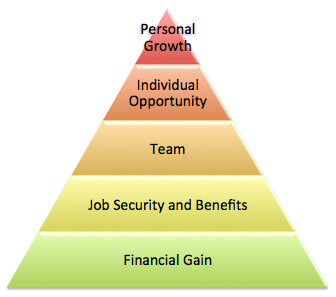
Some background: in 1943, Abraham Maslow published his paper “A Theory of Human Motivation” in The Psychological Review. In it, he posited a series of human drivers that worked sequentially, the lowest order of which must be satisfied in order to achieve the next. For example, when starving to death, we’re unlikely to be concerned with how our peer group thinks of us until we meet that more basic need.
Matt Buckland also talked about candidate hierarchy in a recent Workable webinar:
Maslow used the terms “physiological”, “safety”, “belonging”, “esteem” and “self-actualization” to describe the pattern that human motivations generally move through.
Because jobs are such a huge part of our life experience, why not apply that same theory to your talent attraction strategies? You can broaden the appeal of a job ad or careers page by hitting on more of the motivational bases that Maslow identified.
So what would such a “candidate’s hierarchy of needs” look like? Let’s go through the pyramid one by one:
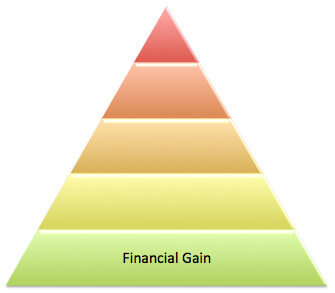
1) Financial gain: how much will I make?
The first step in Maslow’s hierarchy is “Physiological”. This includes the absolute basic needs for human survival; food, sleep, air, water, etc. In terms of jobs, the lowest order motivator has got to be financial gain – a candidate must make money in order to live. They’re not going to work for nothing – actually, they can’t.
So, make it easy for them by putting the salary range on your job postings. That way, you know those candidates who apply are probably OK with that range and you’ve effectively weeded out those who aren’t.
An important caveat: promising adequate or even fair pay for a candidate’s toil should never be your primary motivator for a job, nor should it be your “ace in the hole”. If your post is simply titled “Java Developer $90,000!”, that’s a great indicator that you haven’t really understood the job’s real differentiators or your target audience for that job.
There may be other details disclosed about the job, but at the basest level these will be generic and explanatory, e.g., “You will write code and fix bugs”. Like salary, these are statements which would be true of any job and hardly differentiate. So, how can you make your job ad more personal and attractive to your ideal candidate?
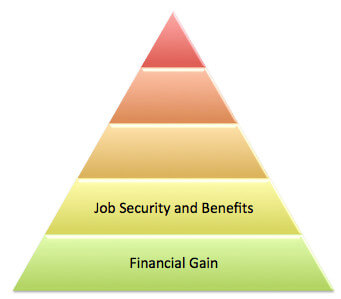
2) Job security and benefits: how ‘safe’ am I in this job?
Maslow’s second step in the hierarchy is “Safety”. People need to feel safe and secure. They need shelter, a social structure where general rules and proper decorum are followed. For job seekers, this could mean whether the job they’re considering is permanent or contract-based, or if the company they’re applying to is a strong and thriving entity. These concerns can be addressed early on, from startups referring to themselves as “VC funded” or larger corporates stating successes (e.g. expanded into a new area, merged with another large company, in business since 19XX).
Details of a lower-than-expected salary or indeterminate contract length will help candidates self-select out of the process, and that’s probably a good thing at this stage. An applicant looking for a six-figure base salary and a guaranteed one-year placement will not apply for a job offering half that salary at a risky startup. Otherwise, they’re wasting their – and your – time. Remember:
A great job ad is about gaining the interest of the right people, not the most people.
Now, benefits: many companies follow in the footsteps of larger organizations that offer free incentives and perks. These include the hyperbolic tales of free food, dogs in the workplace, on site masseuses and hot and cold running champagne.
Promising money and free things are a great way to have someone make a small change such as switching bank accounts or internet service providers. But changing employers? Let’s be realistic: people don’t work for companies because of the ping-pong table in the lunch room. Job security should be implied in any job description and the benefits and perks are nice-to-haves – and a smartly thought-out benefits package can have immense appeal in terms of talent attraction. But there’s more to the pyramid than that.
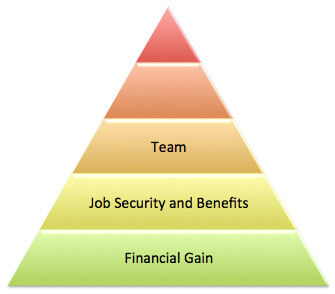
3) Team: what will my team be like?
Maslow’s third tier was “Belonging” or “Love”. In short, that’s the human tribal need for companionship, family, and yes, love. No one is an island. You want to convey that same sense of belonging to a team. Everyone’s been unemployed at some point – they know all too well how draining the lack of sense of belonging can be.
Engage that need in your job ad by talking about the people the candidate will be working with. Honestly, who wants to spend eight hours a day treading the same carpet as people you hate? At the other end of the spectrum, people would love to work with an inspirational leader, or join a team of renowned experts in their field. Cultural fit is another powerful motivator.
A dry “you will work with our team of developers” statement will risk turning off a potential star candidate. Talk about your team and include employee testimonials. Advertise the company’s social activities, outings and volunteer projects via social channels and on your website.
Sell the pedigree of a potential peer group.
Equally relevant, especially in startups, is advertising the profile of the higher-ups in a company – i.e. founders who are ex-Google or ex-Facebook can influence candidates looking to build up their own expertise via association and learning from “the best”.
You can also show how the team organizes and works together. A job can be made more attractive if you explicitly state that the team doesn’t hold lengthy meetings, or they collaborate closely with other parts of the business. For those who are frustrated about their current employer’s bureaucracy or lack of innovation, offering insight into how your company gets work done can be revealing and enlightening.
In short, this is all about building up your employer brand and making your team look like an amazing group to be a part of. But team isn’t enough. You also need to think about the actual candidate themselves. Moving on up the pyramid:
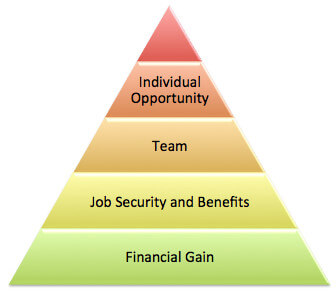
4) Individual opportunity: what’s my role in that team?
The fourth level of Maslow’s hierarchy is “Esteem”. This is the need for appreciation and respect from those around you. People need to feel valued as individuals and that they are making a real contribution. In terms of employment, candidates have a much stronger sense of esteem and self-value when they feel they have an opportunity to contribute. On the flip side, when employees become unhappy and disengaged, feeling like they’re just another cog in the machine, they stagnate.
In a job description, communicate the role in such a way that it’s uniquely important to the rest of the team and to the company as a whole. While it’s a given that some roles you’re advertising are similar to other roles at other companies – or even within the same company – the powerful differentiator of “Individual opportunity” is lost when you loudly proclaim that you’re hiring “one thousand software developers this year!”
Individual opportunities are a higher motivator than the more basic “carrot and stick” incentives of salary and benefits.
Highlight the truly motivating factors that appeal to candidates as individuals, such as autonomous working opportunities and results-driven environments that aren’t overly harnessed by rules and policies. This can be a powerful differentiator, but there’s one final tier on the road to fulfilment.

5) Personal growth: what do I gain from being here?
The top of the pyramid in Maslow’s Hierarchy of Needs is “Self-actualization”. This is the final level of psychological development that can be achieved when all basic and mental needs are fulfilled, and the “actualization” of the full personal potential takes place. Research regularly has found that when people live lives that are different from their true nature and capabilities, they are less likely to be happy than those whose goals and lives match. Gandhi said it best: “Happiness is when what you think, what you say, and what you do are in harmony.”
In terms of your job ad, think about the kind of “personal growth” you can offer to a prospective candidate. Rather than resorting to the dry hyperbole of many existing job ads that do nothing but describe the job you’ll be doing and the company you’ll be working for, be thoughtful and clear and remember the candidate experience – especially when it comes to hiring exceptional employees.
Tell candidates what they stand to gain at a deeper level as an employee.
If you can address the following questions in your job ad, you’re well on your way:
- What are the experiences they’ll have that enable them to grow as individuals?
- Will they gain new skills or be trained in new areas?
- Will they get to mentor or be mentored, leading to rewarding interactions and relationships with others?
- Will they have the scope and freedom to be truly creative?
- Will they be motivated and empowered to innovate?
If you can describe the kind of brighter future a candidate gets by working for you, this might just be the tipping point to hit that big red “apply” button.
Talent attraction: Put yourself in their shoes
If you’re recruiting for Google or Tesla, the brand recognition alone makes your job easy when you’re looking to attract talent – in fact, Google gets two million applications every year. But you’re not them, of course.
Put yourself in the candidate’s shoes and have a look at the job ad you’ve just put together. Does it look like a job you’ll be excited to do? Does it look like the kind of work where you can really grow as an employee and as a person? Go through each of the levels of the candidate hierarchy; salary, benefits, team, individual, and personal growth. Have you covered all of those?
If the answer is yes, then you’ll get a highly motivated candidate who doesn’t mind the commute to the “unsexy” location nor that you’re an “unsexy” company. You’ve shown them that they’ll get a lot of personal fulfilment from their work; something that many jobs don’t even claim to offer in their job ads. You might even attract the kind of talent that you’ve been trying to lure from those “cooler” areas.
Related:
How to source passive candidates
How to write a job ad: 7 common mistakes to avoid
How to write the best job description ad ever: 6 tips for success



